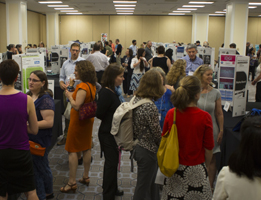This project is supporting and investigating the implementation of reformed mathematics instruction at the middle school level in two large school districts. The primary goal of the project is to develop an empirically grounded theory of action for implementing reform at school and district levels. The researchers are investigating reform within a coherent system that focuses on leadership and school-based professional development.
